
Eucalyptus Tree Seeds: How to Grow, Care For, and Harvest Them Successfully at Home
Have you ever dreamed of growing your very own eucalyptus tree—right from a tiny seed? 
Don’t worry—you’re not alone, and you’re definitely in the right place.
In this comprehensive guide, we’ll walk you through everything you need to know to grow, care for, and harvest eucalyptus trees at home—successfully. From choosing the right seeds to creating the perfect growing environment, this article is packed with expert tips and real-world solutions designed to make your gardening journey easier, greener, and more fulfilling.
Keep reading—you’re just a few steps away from growing a thriving eucalyptus tree right in your backyard or balcony.
Table of Contents
Toggle What Are Eucalyptus Tree Seeds?
What Are Eucalyptus Tree Seeds?
Eucalyptus tree seeds are the small, dry, capsule-like seeds that grow inside the woody fruits (called gum nuts) of eucalyptus trees. These seeds are the starting point for growing your own eucalyptus tree at home—whether for their fast growth, fragrant leaves, or striking beauty 
 Quick Facts About Eucalyptus Seeds:
Quick Facts About Eucalyptus Seeds:
- Size: Tiny and lightweight—usually less than 1/8 inch long
- Color: Varies from dark brown to black
- Shape: Often teardrop or irregular in form
- Germination Time: 7–21 days under the right conditions
- Source: Found inside the woody pods that fall from the tree
 Why Grow Eucalyptus from Seeds?
Why Grow Eucalyptus from Seeds?
Growing eucalyptus from seed is a cost-effective and rewarding way to raise healthy trees from the very beginning. Unlike buying a nursery plant, starting from seed allows you to:
- Choose specific varieties (some grow small and shrub-like, while others become tall and majestic
)
- Control the environment they grow in for stronger, more resilient plants
- Avoid transplant shock that often comes with store-bought trees
 Types of Eucalyptus Seeds to Know
Types of Eucalyptus Seeds to Know
There are over 700 species of eucalyptus, but not all are ideal for home growing. Some beginner-friendly varieties include:
- Eucalyptus globulus (Blue Gum): Fast-growing and great for fragrant leaves
- Eucalyptus citriodora (Lemon-scented gum): Known for its citrusy aroma
- Eucalyptus gunnii (Cider Gum): Cold-tolerant and compact—great for small spaces
When shopping for seeds, look for ones labeled as viable or fresh harvest to ensure better germination rates.
 How to Identify Good Eucalyptus Seeds
How to Identify Good Eucalyptus Seeds
Not all seeds you collect or buy will be viable. Here’s how to spot healthy ones:
- Firm and dry: Soft or squishy seeds are likely no good
- Even color: Avoid seeds that are pale or moldy
- Float test: Place seeds in water—viable seeds usually sink, while duds float


Ready to grow your own? Let’s explore how to plant them next!
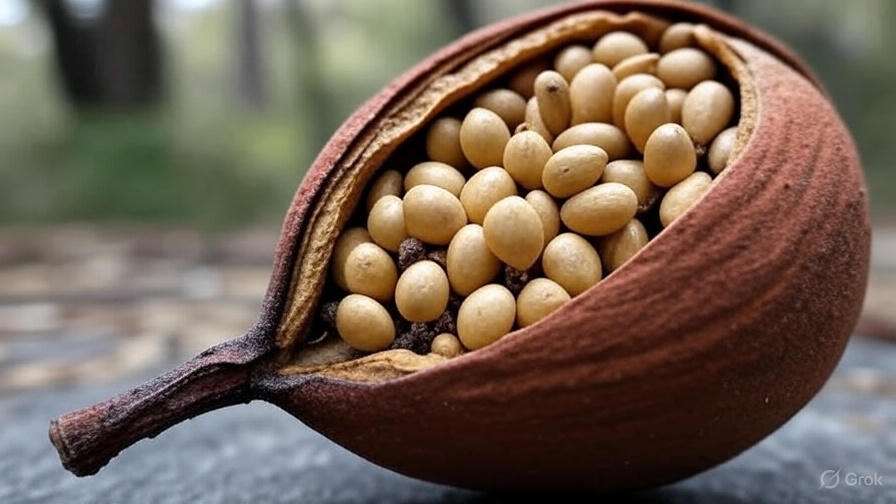
 Choosing the Right Eucalyptus Seeds for Your Climate
Choosing the Right Eucalyptus Seeds for Your Climate
Not all eucalyptus trees are the same—and picking the right type of eucalyptus seeds is crucial for your success as a home grower. Choosing a species that thrives in your local climate will make growing, caring for, and harvesting much easier and more rewarding 
Here’s how to make the best choice
 Understand Your Climate Zone
Understand Your Climate Zone
Before you shop for seeds, know your USDA Plant Hardiness Zone (or your local climate equivalent). Eucalyptus species vary widely—some love the heat, others tolerate frost. Matching the species to your zone will save you from headaches later.
- Hot, Dry Climates (Zones 8–11):
Great options: Eucalyptus citriodora (Lemon-scented gum), Eucalyptus camaldulensis (River red gum)
These varieties love full sun, tolerate drought, and are perfect for Mediterranean or arid regions.
- Mild, Temperate Climates (Zones 7–9):
Great options: Eucalyptus gunnii (Cider gum), Eucalyptus globulus (Blue gum)
These grow well with moderate rainfall and cooler winters.
- Cooler or Frost-Prone Areas (Zones 6–8):
Great options: Eucalyptus pauciflora (Snow gum), Eucalyptus nicholii (Willow peppermint)
These are more cold-hardy and can handle light frost or brief freezes.
 Research Each Species’ Traits
Research Each Species’ Traits
Each eucalyptus variety comes with its own personality:
- Growth Speed – Want fast shade? Eucalyptus globulus grows quickly.
- Size Matters – Small yard? Choose a compact type like Eucalyptus gregsoniana (Dwarf snow gum).
- Scent Preferences – For a citrusy aroma, try Eucalyptus citriodora
.
- Leaf Type & Color – Some varieties have blue-grey foliage that adds beauty to your garden
.
 Choose Local or Regionally Adapted Seeds
Choose Local or Regionally Adapted Seeds
Where possible, buy seeds from suppliers in your region. These seeds are often better adapted to local conditions, increasing your chance of success. Plus, they may support native wildlife and reduce the risk of invasive behavior.
Pro Tip: Look for reputable seed suppliers that label their seeds by hardiness zone, origin, and growing requirements.
 Don’t Forget Organic or Treated Options
Don’t Forget Organic or Treated Options
If you’re growing eucalyptus for herbal use, crafts, or essential oils, choose organic, untreated seeds 
Final Thought 
Selecting the right eucalyptus seeds is the first step toward a thriving, fragrant, and low-maintenance tree in your garden. By matching the species to your climate and lifestyle needs, you’ll set yourself up for success right from the start 
Next up: Let’s talk about how to germinate your eucalyptus seeds and give them the perfect start to life!
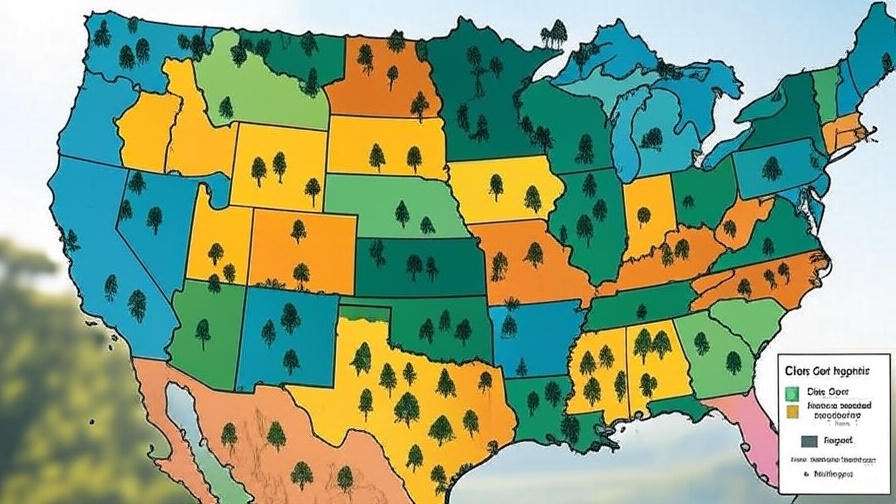
 How to Germinate Eucalyptus Tree Seeds (Step-by-Step)
How to Germinate Eucalyptus Tree Seeds (Step-by-Step)
Germinating eucalyptus tree seeds at home is easier than you might think — and incredibly rewarding! Whether you’re dreaming of a fragrant garden or a mini indoor forest, it all starts with healthy, well-sprouted seeds. Here’s a clear, step-by-step guide to help you get it right the first time.
 What You’ll Need:
What You’ll Need:
- Eucalyptus seeds (fresh and from a reliable source)
- Seed-starting tray or small pots
- Sterile seed-starting mix
- Spray bottle with water
- Clear plastic cover or plastic wrap
- Labels (optional, but helpful)
 Step 1: Choose Fresh, High-Quality Seeds
Step 1: Choose Fresh, High-Quality Seeds
Start with viable eucalyptus seeds from a trusted supplier. Some popular types for home growing include Eucalyptus globulus (Blue Gum), Eucalyptus citriodora (Lemon-Scented Gum), and Eucalyptus gunnii (Cider Gum). Make sure the seeds are:
- Fresh (within 1 year of harvest)
- Untreated (organic or natural preferred)

 Step 2: Cold Stratify (Optional but Helpful)
Step 2: Cold Stratify (Optional but Helpful)
While not always required, cold stratification helps improve germination rates for many eucalyptus species.
How to do it:
- Moisten a paper towel and wrap the seeds in it.
- Place the towel in a sealed plastic bag.
- Store it in the refrigerator for 2–4 weeks.
This simulates winter, triggering natural germination signals.
 Step 3: Prepare Your Seed Tray
Step 3: Prepare Your Seed Tray
Fill your seed tray or pots with a well-draining, sterile seed-starting mix. Avoid using regular garden soil — it’s too heavy and may contain pests or fungi.
Gently moisten the mix using a spray bottle. It should feel like a wrung-out sponge — damp, not soggy.
 Step 4: Sow the Seeds Lightly
Step 4: Sow the Seeds Lightly
Eucalyptus seeds are tiny and need light to germinate, so don’t bury them!
- Sprinkle the seeds evenly on top of the soil.
- Press them in gently with your fingers or the back of a spoon.
- Do not cover with soil.

 Step 5: Mist & Cover
Step 5: Mist & Cover
After sowing:
- Mist the surface with water using a spray bottle
- Cover the tray with clear plastic wrap or a humidity dome to keep moisture in
This creates a mini greenhouse that helps seeds sprout faster.
 Step 6: Provide Light & Warmth
Step 6: Provide Light & Warmth
Eucalyptus seeds need warmth and light to grow.
- Temperature: Keep them between 70–75°F (21–24°C)
- Light: Place them in a bright spot or under a grow light for 12–16 hours a day
Avoid direct midday sun — it can overheat the seedlings.
 Step 7: Be Patient & Watch for Sprouts
Step 7: Be Patient & Watch for Sprouts
Germination usually takes 7 to 21 days, depending on the species and conditions.
During this time:
- Keep the soil consistently moist (but not waterlogged)
- Remove the plastic cover once seeds sprout
- Watch for tiny green shoots
— that’s your cue to celebrate!
 Common Mistakes to Avoid
Common Mistakes to Avoid




 Final Thoughts
Final Thoughts
Germinating eucalyptus tree seeds at home is a fun, beginner-friendly project that sets the stage for a thriving garden. By following these simple steps, you’ll boost your chances of success and be well on your way to growing healthy eucalyptus trees — all from seed!
Next up? Learn how to care for your seedlings as they grow strong and tall!
Would you like the next section on how to care for eucalyptus seedlings too?

 Growing Eucalyptus Seedlings: Early Care Tips
Growing Eucalyptus Seedlings: Early Care Tips
Getting your eucalyptus seedlings off to a strong start is key to growing healthy, vibrant trees. Whether you’re planning to grow them indoors in pots or outdoors in your garden, early care makes all the difference. Here’s how to nurture your young eucalyptus seedlings the right way—step by step.
1.  Give Them Plenty of Light
Give Them Plenty of Light
Eucalyptus seedlings love light. From the moment they sprout, place them in a bright, sunny location—preferably near a south-facing window or under grow lights. Aim for 12–16 hours of light daily to mimic their native warm climate.

2.  Water with Care (Not Too Much!)
Water with Care (Not Too Much!)
Young eucalyptus plants are sensitive to overwatering. The soil should be moist but not soggy. Let the top inch of soil dry out before watering again.
- Use a spray bottle or watering can with a fine spout
- Water in the morning so excess moisture can evaporate

3.  Keep It Warm and Cozy
Keep It Warm and Cozy
Eucalyptus seedlings thrive in warm environments. Keep temperatures between 18°C to 24°C (65°F to 75°F). Avoid drafty windows, cold rooms, or sudden temperature changes.
If growing indoors in a cooler climate, a seedling heat mat can help maintain consistent warmth.
4.  Improve Airflow to Prevent Disease
Improve Airflow to Prevent Disease
Damp conditions and poor airflow can lead to mold or fungal issues like damping-off. To keep seedlings healthy:
- Space them out to avoid overcrowding
- Use a small fan on low setting for gentle air circulation
- Avoid overhead watering

5.  Thin and Transplant with Care
Thin and Transplant with Care
Once your seedlings have 2–3 sets of true leaves, it’s time to thin them out. Choose the strongest plants and gently transplant them into individual pots.
- Use a deep pot—eucalyptus roots grow fast and deep
- Handle by the leaves, not the stem, to avoid damage
- Use a light, well-draining potting mix

6.  Avoid Fertilizing Too Early
Avoid Fertilizing Too Early
Young eucalyptus seedlings don’t need fertilizer right away. Feeding too early can burn roots or stunt growth. Wait until they’re 4–6 weeks old, then begin with a diluted liquid fertilizer (¼ strength) every 2–3 weeks.
7.  Monitor for Common Problems
Monitor for Common Problems
Keep an eye out for:
- Yellow leaves (overwatering or poor drainage)
- Leggy growth (not enough light)
- Wilting (root issues or too dry)
Fix issues early to avoid losing your seedlings.
 Final Tip: Patience Pays Off!
Final Tip: Patience Pays Off!
Growing eucalyptus from seed takes time, but with the right care, you’ll be rewarded with strong, fragrant trees 

SEO Keywords Targeted: eucalyptus seedlings, eucalyptus care tips, growing eucalyptus at home, how to grow eucalyptus, early care eucalyptus tree
Optimized For: Google Discover, SGE, voice search (AEO), beginner gardening FAQs
Let me know if you’d like the next section or a quick checklist version!
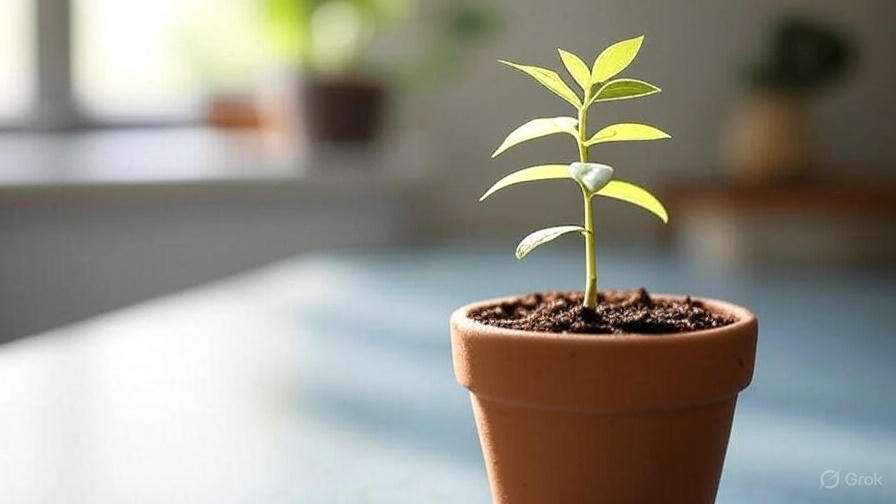
 Planting Eucalyptus Trees at Home
Planting Eucalyptus Trees at Home
Thinking of growing eucalyptus at home? Great choice! 
 Step 1: Choose the Right Eucalyptus Variety
Step 1: Choose the Right Eucalyptus Variety
Not all eucalyptus trees are suitable for home gardens. Some grow over 100 feet tall! For a manageable size, choose dwarf or small-growing varieties like:
- Eucalyptus gunnii (Cider Gum) – cold-hardy and great for containers
- Eucalyptus globulus ‘Compacta’ – smaller version of the classic Blue Gum
- Eucalyptus pulverulenta – stunning silver foliage, ideal for pruning

 Step 2: Pick a Sunny, Well-Drained Spot
Step 2: Pick a Sunny, Well-Drained Spot
Eucalyptus trees love the sun. Choose a location with:
- 6–8 hours of full sunlight daily
- Good drainage – waterlogged roots can kill the plant
- Shelter from strong winds, especially when young
If planting in a container, use a large pot with drainage holes and fill it with a light, well-draining potting mix (like cactus mix blended with compost).
 Step 3: Prepare the Soil or Container
Step 3: Prepare the Soil or Container
Whether in-ground or in pots, soil prep is key:
- Loosen the soil at least 12–18 inches deep
- Mix in compost or organic matter for nutrients
- If your soil is clay-heavy, amend it with sand or perlite to improve drainage

 Step 4: Plant Your Seedling or Germinated Seed
Step 4: Plant Your Seedling or Germinated Seed
- Dig a hole slightly larger than the root ball
- Place the seedling so the base of the stem is level with the soil
- Backfill gently, firming the soil to remove air pockets
- Water deeply right after planting

 Step 5: Provide Support (If Needed)
Step 5: Provide Support (If Needed)
Young eucalyptus trees may need a stake to stay upright in windy areas. Use a soft tie and check regularly to avoid girdling the stem.
 When’s the Best Time to Plant?
When’s the Best Time to Plant?
- Spring to early summer is ideal, especially in cooler climates
- In frost-free regions, you can plant almost year-round
- Avoid planting during extreme heat or cold snaps
 Common Mistakes to Avoid
Common Mistakes to Avoid



Planting eucalyptus at home doesn’t have to be difficult. With the right location, soil prep, and a little care, you’ll be on your way to a thriving, fragrant tree in no time

Caring for Eucalyptus Trees Year-Round 
Eucalyptus trees are tough and fast-growing, but they still need consistent care to stay healthy and beautiful all year long. Whether you’re growing your eucalyptus in a pot or directly in the ground, here’s how to keep it thriving through every season.
 Spring: Time to Boost Growth
Spring: Time to Boost Growth
Spring is when your eucalyptus tree wakes up and starts growing fast. Here’s what to do:
- Feed It Right: Apply a balanced, slow-release fertilizer to support strong leaf and root development.
- Prune Lightly: Remove any dead or damaged branches to shape the tree and promote airflow.
- Water Consistently: As temperatures rise, increase watering slightly, especially for young or potted trees.
- Check for Pests: Watch for aphids or psyllids, which can be common in spring. Neem oil spray works well for organic control.

 Summer: Keep It Hydrated
Summer: Keep It Hydrated
Eucalyptus trees love sunlight but still need help staying hydrated in the heat:
- Water Deeply: Give your tree a deep soak once or twice a week, depending on how hot and dry it gets.
- Protect Young Trees: Use shade cloth or a light cover during extreme heatwaves if your tree is still small.
- Watch for Stress Signs: Wilting or curling leaves can mean it needs more water or is getting too much sun.

 Fall: Prep for Dormancy
Fall: Prep for Dormancy
As the growing season slows down, shift your focus to strengthening your eucalyptus for the cooler months:
- Reduce Watering: Let the soil dry slightly between waterings to prevent root rot.
- Skip Fertilizer: Stop feeding by mid-fall so the tree can naturally prepare for winter dormancy.
- Clean Up: Rake fallen leaves and check for any early signs of disease or pests.

 Winter: Protect from Cold
Winter: Protect from Cold
While eucalyptus is hardy, some varieties are sensitive to frost. Here’s how to help them through the chill:
- Move Potted Trees Indoors or Under Shelter: Place them in a sunny, frost-free spot like a greenhouse or bright porch.
- Use Frost Cloth: For in-ground trees, wrap the trunk with burlap or use frost protection fabric during cold snaps.
- Water Less Often: Cut back on watering, but don’t let the soil dry out completely.

Year-Round TLC = A Thriving Tree 

Consistent, seasonal care helps eucalyptus trees grow stronger, look better, and resist pests and diseases naturally. By staying in tune with the tree’s needs throughout the year, you’ll enjoy a lush, fragrant eucalyptus tree that enhances your home garden—season after season!

Would you like the next section on Harvesting Eucalyptus Leaves and Seeds?
 When and How to Harvest Eucalyptus Leaves or Branches
When and How to Harvest Eucalyptus Leaves or Branches
Knowing when and how to harvest eucalyptus leaves or branches is key to getting the most fragrance, essential oils, and beauty from your tree. Whether you’re growing eucalyptus for homemade remedies, floral arrangements, or just for its refreshing scent, harvesting the right way makes all the difference. Let’s walk through the best time and technique to do it right.
 Best Time to Harvest Eucalyptus
Best Time to Harvest Eucalyptus
The ideal time to harvest eucalyptus leaves or branches depends on your purpose:
- For aroma or essential oil use:
Late morning, after the dew dries but before midday heat, is best. This is when the oil concentration in the leaves is at its peak.
- For drying or crafts:
Early growth stages (young but firm branches) are ideal because they’re more flexible and easier to shape.
- Seasonally:
Late spring through early fall is the most active growing period—perfect for regular harvesting. Avoid harvesting in winter when the plant is semi-dormant.
 How to Harvest Eucalyptus Leaves or Branches
How to Harvest Eucalyptus Leaves or Branches
Here’s a beginner-friendly step-by-step guide:
- Choose mature, healthy branches
Look for branches that are at least 1 foot long and have fully developed leaves. Avoid weak, yellowing, or damaged parts. - Use sharp, clean tools
Always use sterilized pruning shears or scissors. This prevents the spread of disease and ensures a clean cut for better regrowth. - Cut at a 45-degree angle
Make your cut just above a leaf node (the point where leaves grow from the stem). This encourages bushier growth. - Don’t over-harvest
Only remove up to one-third of the plant at a time. Over-harvesting can stress your tree and slow its growth. - Collect and store properly
- Fresh use: Place cuttings in water or use them right away.
- Drying: Hang small bundles upside down in a cool, dry place for 2–3 weeks.
- Essential oil extraction: Use freshly harvested leaves for best potency.
 Pro Tips for Sustainable Harvesting
Pro Tips for Sustainable Harvesting
- Regular trimming promotes growth
Light harvesting every few weeks encourages a fuller, healthier tree. - Rotate cutting areas
Don’t take all your clippings from one side—balance the shape and reduce stress. - Watch for pests or diseases
Harvesting is a great time to inspect your tree. Prune any infected parts promptly.
Harvesting eucalyptus at the right time—and with the right method—not only keeps your plant thriving but also ensures you get the highest quality leaves for your home use. Whether you’re after that spa-like scent in your shower or preparing DIY oils and decorations, your eucalyptus will reward you for good care
Next up: Learn how to store and use eucalyptus leaves for maximum benefits!
Benefits of Growing Eucalyptus at Home 
Growing eucalyptus at home isn’t just a lovely gardening choice—it offers many practical benefits that make it worth the effort. Whether you’re a beginner or an experienced plant lover, here’s why adding eucalyptus to your home garden can be a game-changer:
1. Natural Air Purifier 
Eucalyptus trees release fresh, clean oxygen and have natural compounds that can help purify the air. Their aromatic leaves release a refreshing scent that can reduce indoor pollutants and allergens, making your home environment healthier.
2. Easy Source of Aromatherapy 
The unmistakable fragrance of eucalyptus leaves is known for its calming and invigorating properties. Having a eucalyptus plant at home gives you easy access to its leaves for use in homemade essential oils, steam inhalation, or simply enjoying the soothing aroma in your living space.
3. Natural Pest Repellent 
Eucalyptus contains natural oils that repel common pests like mosquitoes and flies. Growing it near windows or outdoor seating areas can help keep bugs away without harsh chemicals—perfect for a natural, eco-friendly approach to pest control.
4. Decorative and Versatile 
With its attractive silvery-blue leaves and graceful form, eucalyptus adds a unique aesthetic to your garden or home décor. You can also cut fresh branches to use in floral arrangements, wreaths, or dried for crafts, adding a touch of nature indoors.
5. Fast-Growing and Low Maintenance 
Eucalyptus trees grow quickly and adapt well to different environments. They require minimal watering once established and tolerate a range of soil types, making them a practical choice for busy gardeners who want rewarding results with less hassle.
6. Health and Wellness Uses 
Beyond aroma, eucalyptus leaves have traditional uses in natural remedies for colds, congestion, and muscle relief. Growing your own supply means you can harvest fresh leaves for teas, infusions, or topical applications whenever needed.
By growing eucalyptus at home, you’re not only enhancing your garden’s beauty but also bringing multiple health, wellness, and practical benefits right to your doorstep. Ready to get started? Let’s explore how to grow, care for, and harvest eucalyptus seeds successfully!
Common Problems and Troubleshooting Tips 
Growing eucalyptus trees from seeds can be rewarding, but like any plant, they come with some common challenges. Don’t worry! Here’s a quick guide to help you troubleshoot and keep your eucalyptus seedlings thriving.
1. Seeds Not Germinating 
If your eucalyptus seeds aren’t sprouting, it’s usually due to one of these reasons:
- Old or poor-quality seeds: Make sure your seeds are fresh and from a reliable source.
- Wrong planting depth: Plant seeds shallowly, about ¼ inch deep, so they can break through easily.
- Temperature issues: Eucalyptus seeds need warmth (around 70–75°F or 21–24°C) to germinate. Try using a seedling heat mat if it’s too cold.
- Overwatering or underwatering: Keep soil moist but not soggy. Too much water can cause seeds to rot.
Tip: Soaking seeds overnight can help soften the hard seed coat and speed up germination. Patience is key—it can take 1 to 3 weeks.
2. Seedlings Dying or Wilting 
If your young plants look weak or start to wilt, consider these factors:
- Too much sun: Seedlings prefer indirect sunlight until they’re stronger. Direct, harsh sunlight can dry them out.
- Overwatering: Root rot is common if soil stays waterlogged. Let the top inch of soil dry out between watering.
- Poor drainage: Use well-draining potting mix and pots with drainage holes.
- Pests: Keep an eye out for aphids or spider mites, which can weaken seedlings. A gentle spray of water or neem oil can help.
3. Slow Growth or Leggy Seedlings 
If your seedlings are growing tall and spindly:
- They’re probably not getting enough light. Move them to a brighter spot or provide a grow light.
- Ensure proper airflow to prevent fungal issues.
- Avoid over-fertilizing young seedlings, which can cause imbalance.
4. Leaves Turning Yellow or Brown 
Yellowing or browning leaves can indicate:
- Water stress: Either too much or too little water.
- Nutrient deficiency: Use a balanced, diluted fertilizer once seedlings develop a few true leaves.
- Environmental stress: Sudden temperature changes or drafts can shock young plants.
Quick Recap: Keep Your Eucalyptus Happy 
- Use fresh seeds and soak them overnight.
- Plant seeds shallowly in warm, moist, well-draining soil.
- Provide indirect sunlight and avoid overwatering.
- Watch for pests and treat early.
- Give seedlings enough light to prevent legginess.
By spotting these common problems early and following these simple fixes, your eucalyptus trees will have the best chance to grow strong and healthy right at home. Happy planting!
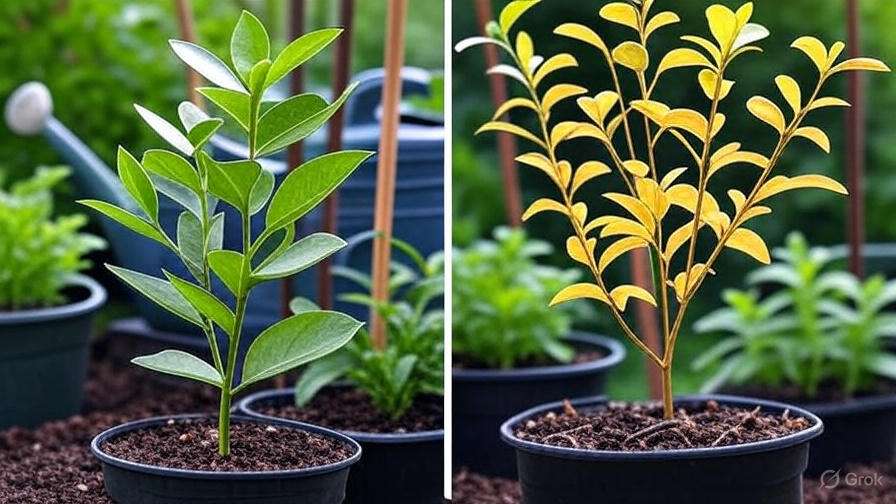
Conclusion
Growing eucalyptus trees from seeds may seem challenging at first, but with the right knowledge and care, anyone can successfully nurture these beautiful and fragrant trees at home. By choosing quality eucalyptus tree seeds, following proper germination steps, and providing consistent care, you’ll enjoy watching your seedlings grow into thriving trees that add natural beauty and soothing aromas to your space.
Remember, patience and attention to detail are key—every gardener’s journey is unique, and even small efforts can lead to big rewards. Whether you’re planting for essential oils, decoration, or simply the joy of gardening, eucalyptus trees offer a versatile and rewarding experience.
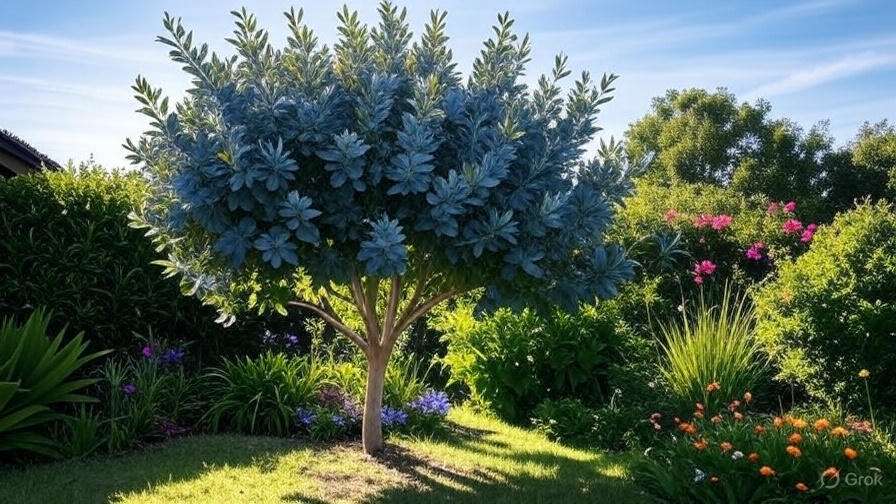
Ready to start your eucalyptus growing adventure? Take the first step today, and don’t hesitate to revisit this guide whenever you need support. Your home garden is about to get greener and more fragrant!
Frequently Asked Questions(FAQ)
How do I germinate eucalyptus tree seeds successfully?
To germinate eucalyptus seeds, soak them in warm water for 24 hours, then plant them in a well-draining seed mix. Keep the soil moist and warm (around 70–77°F or 21–25°C), and provide plenty of indirect sunlight. Germination usually takes 1–3 weeks.
When is the best time to plant eucalyptus tree seeds?
The ideal time to plant eucalyptus seeds is in early spring when temperatures start to warm up. This gives seedlings a full growing season to establish before colder weather arrives. In mild climates, you can also plant in fall with proper protection.
Can eucalyptus trees grow indoors from seeds?
Yes, eucalyptus trees can be grown indoors from seeds if given enough sunlight (at least 6 hours daily) and planted in large pots with good drainage. Keep indoor temperatures between 65–75°F (18–24°C) and avoid overwatering to prevent root rot.
How often should I water eucalyptus seedlings?
Water eucalyptus seedlings regularly to keep the soil evenly moist but not soggy. Overwatering can cause root rot, so allow the top inch of soil to dry out between watering. Once established, eucalyptus trees are drought-tolerant and require less frequent watering.
What type of soil is best for growing eucalyptus from seeds?
Eucalyptus seeds grow best in a light, well-draining soil mix rich in organic matter. A combination of potting soil, sand, and perlite or vermiculite works well to provide good aeration and prevent waterlogging.
How long does it take for eucalyptus trees to grow from seeds?
Eucalyptus trees typically take 1 to 3 years to grow from seeds into small trees, depending on the species and growing conditions. Fast-growing varieties can reach several feet within the first year if cared for properly.
Can I harvest eucalyptus leaves from young trees?
Yes, you can lightly harvest mature leaves and small branches from young eucalyptus trees without harming them. Harvesting is best done in spring or early summer when the leaves are fresh and aromatic.
What are common problems when growing eucalyptus from seeds?
Common issues include poor germination due to old or untreated seeds, overwatering causing root rot, and insufficient light leading to leggy seedlings. Using fresh seeds, proper watering, and providing adequate sunlight can help avoid these problems.




